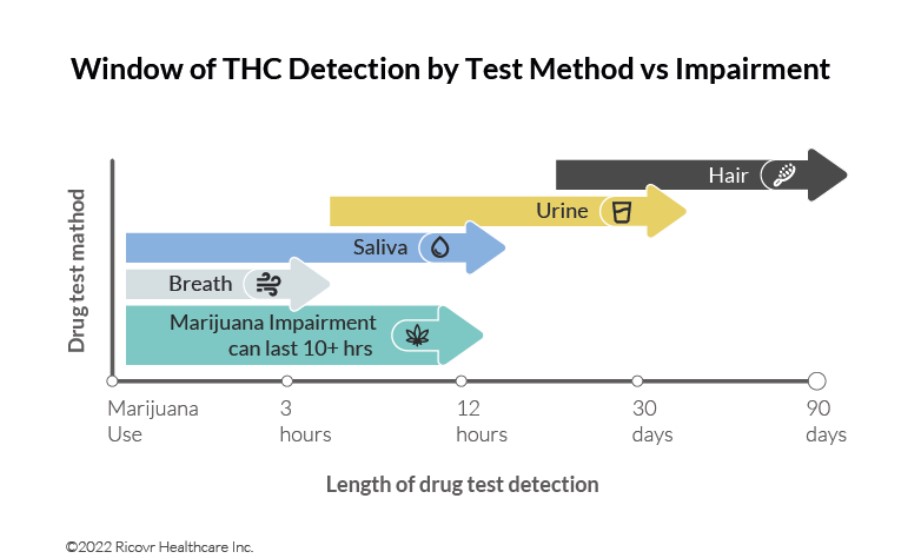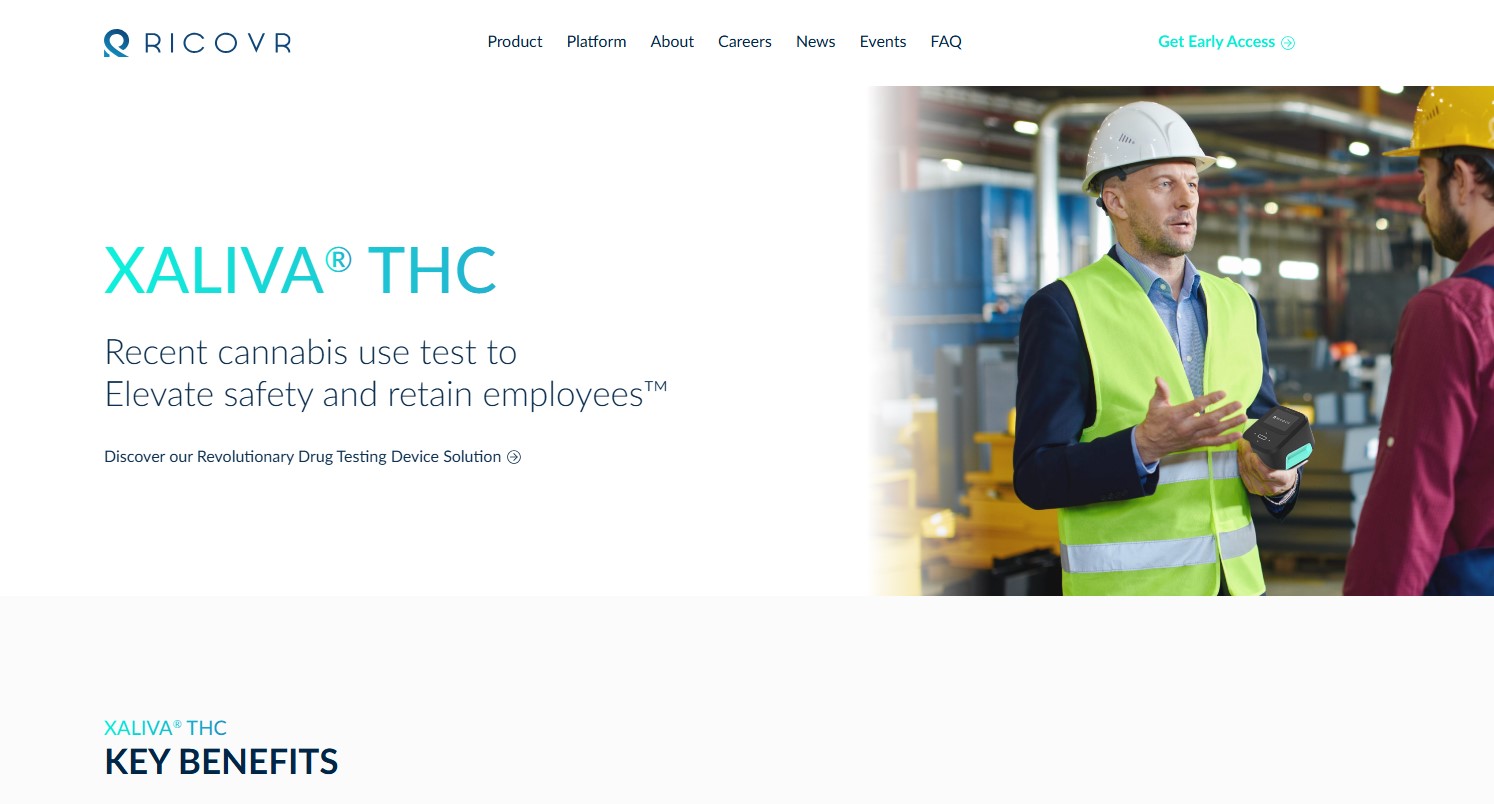Amid legalization, what is the best drug test method for recent use detection of marijuana (THC)?

By RICOVR Healthcare
Kyle Muse, CMO
Saliva testing is quickly becoming a popular method for detecting recent use of marijuana. The Substance Abuse and Mental Health Services Administration (SAMHSA) projects that 25 percent to 30 percent of all drug testing will transition to oral fluid over the next four years. (1) This is because it is a fast, non-invasive, donor-driven, and easy-to-use method that can provide accurate and reliable results. This article will explore why saliva testing is the best method for detecting recent use of (THC) marijuana.
Fast & Easy to Use
The ease of use is a significant difference between saliva testing and traditional methods. Unlike urine or blood tests, which require collecting samples in a controlled environment, saliva tests can be performed on the spot. This makes them a convenient option for employers, law enforcement, and other organizations that need to quickly and easily test individuals for recent marijuana use.
Optimal Length of Detection to Establish Recent Use of Cannabis
Saliva testing is also highly accurate, as it can detect recent marijuana use within the past 12 hours or less, depending on the THC cut-off level. (2) The length of test method detection vs. window of impairment is depicted in Fig. 1.
Active THC molecules are found in saliva versus traditional methods that only detect metabolites or past use. This means that urine tests detect marijuana for several days or weeks after use and can lead to unfair adverse actions for what an individual did on their own time and well past impairment.
Even a recent study from the Journal of Analytical Toxicology (JAT) found that saliva testing was more sensitive and specific for recent use detection than whole blood. (3) Finally, breath detection only provides up to a 3-hour length of detection for THC. (4) The window of impairment can last 10+ hours, depending on multiple factors. (5) This is far too short in a real-world application and can potentially miss several hours of impairment. Saliva testing can cover the entire window of potential impairment or the whole workday.
Non-invasive
Another advantage of saliva testing is that it is non-invasive and donor-driven. Unlike blood or urine tests, saliva tests do not require needles or bathroom observation, which can be uncomfortable or even painful for some individuals. This is especially important when testing individuals who may be hesitant or resistant to traditional methods of testing. This makes them a more practical option for organizations that need to test large numbers of individuals on a regular basis.
Saliva Testing Provides Fairness and Maintains Public & Workplace Safety
In conclusion, saliva testing is the best method for detecting recent use of marijuana because it is fast, easy to use, accurate, and non-invasive. It provides reliable results that act as an effective deterrent to workplace cannabis use. It is a suitable alternative to blood and urine testing, which can be uncomfortable and invasive and may not provide accurate results for recent use detection.
For real-world applications, breath testing provides a length of detection that is too short and could lead to adverse safety outcomes. As marijuana legalization becomes more widespread, saliva testing is a fair, practical, and effective solution for organizations that need to detect recent marijuana use among their employees and for law enforcement purposes.
Sources:
- https://www.shrm.org/resourcesandtools/hr-topics/talent-acquisition/pages/hhs-issues-guidelines-oral-fluid-drug-testing.aspx
- https://pubmed.ncbi.nlm.nih.gov/23983217/
- https://pubmed.ncbi.nlm.nih.gov/34185831/
- https://academic.oup.com/clinchem/article/59/12/1780/5622101?login=false
- https://www.sciencedirect.com/science/article/pii/S0149763421000178



